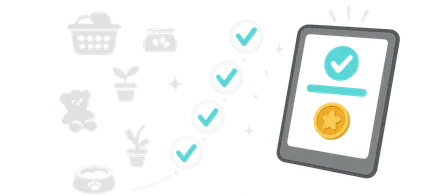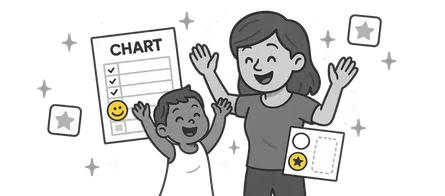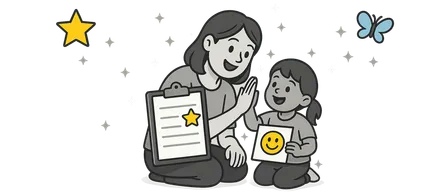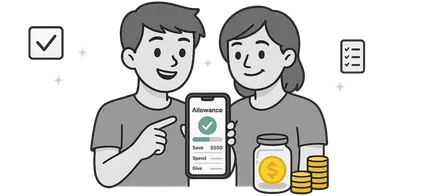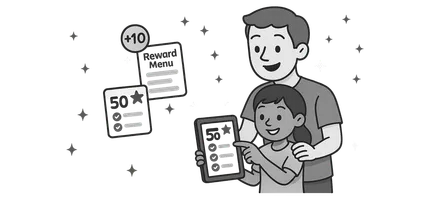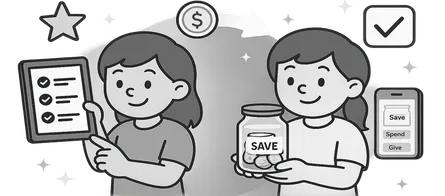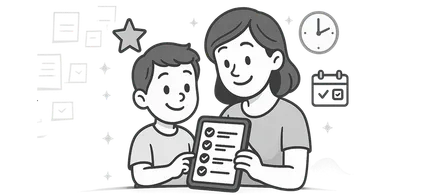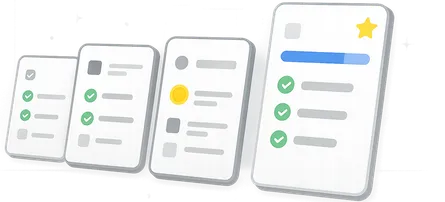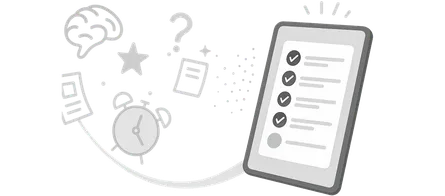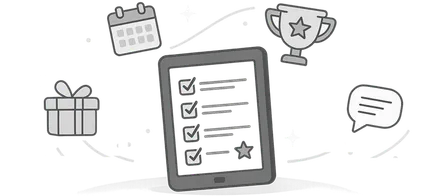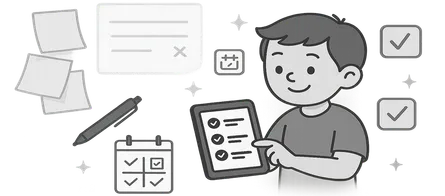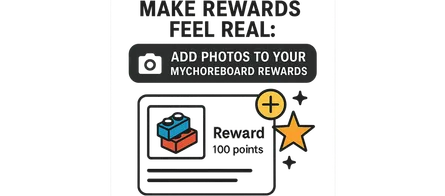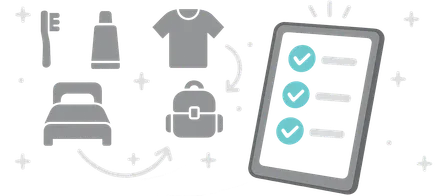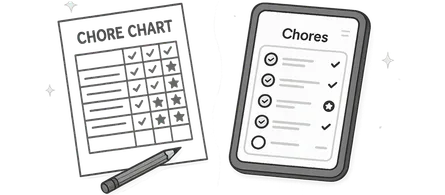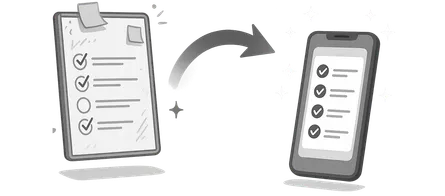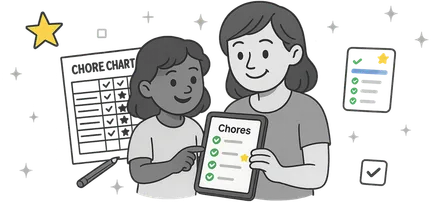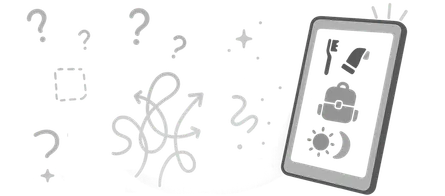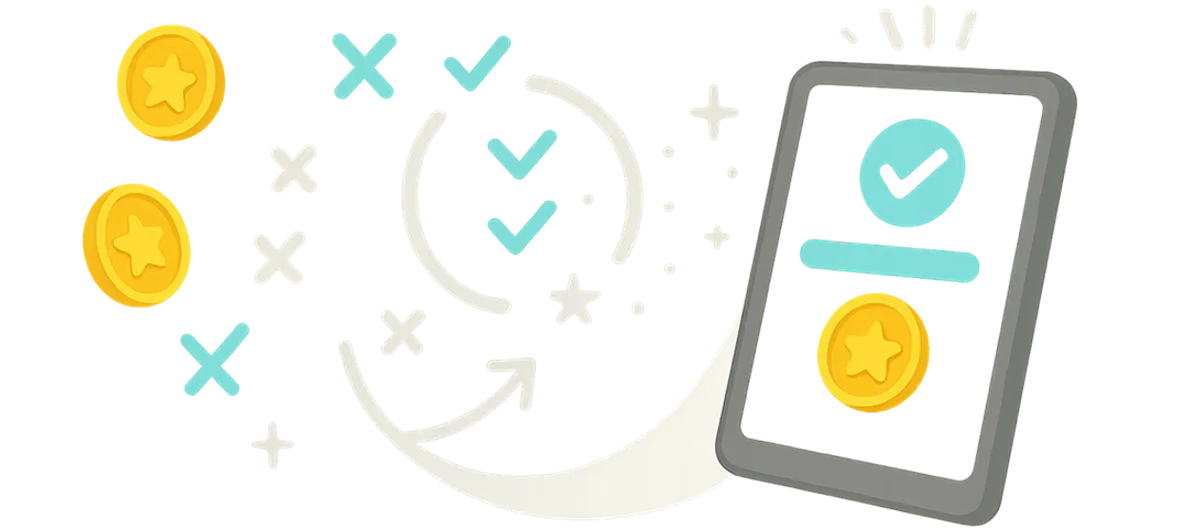
Reward Systems That Motivate ADHD Kids (Without Bribes or Battles)
- Jacob Volk
- Parenting , ADHD
- 25 Sep, 2025
Why ADHD Motivation Works Differently
Parents often say, “My child can focus — just not on chores.”
That’s not inconsistency; it’s neuroscience. ADHD isn’t a lack of willpower—it’s a difference in how the brain experiences reward.
Typical brains release dopamine gradually during effort, creating steady motivation. ADHD brains, by contrast, need stronger and faster feedback loops to feel the same drive. When rewards are delayed, motivation collapses.
That’s why sticker charts, long-term allowances, or “we’ll celebrate at the end of the week” plans often fail. The gap between action and payoff is simply too wide for ADHD brains to feel the connection.
Effective reward systems close that gap. They make success immediate, visible, and achievable—transforming chores, routines, and homework from power struggles into predictable progress.
New here? This article is part of our ADHD & Routines series. For a full overview of apps and structure systems, start with our Chore App for ADHD Kids Guide .
What Doesn’t Work (and Why)
Before we talk about what to build, it’s important to know what to skip. Many traditional methods backfire because they rely on delayed reinforcement or negative pressure.
Parents commonly report:
- Sticker charts that lose impact. The novelty fades within days.
- Allowances tied to perfection. Kids lose motivation after one missed chore.
- Threat-based systems (“no screen time if you don’t…”). Fear blocks learning and sparks resistance.
- Too many goals at once. ADHD brains thrive on focus; cluttered systems overwhelm.
These aren’t signs of failure—they’re signs the system wasn’t built for ADHD. You’re not doing it wrong; you just need faster loops and clearer signals.
The Science Behind Effective Rewards
Behavioral psychologists call it reinforcement learning—the process of pairing effort with immediate positive feedback. For ADHD, this mechanism has to work on “fast-forward.”
Studies show that children with ADHD experience lower dopamine release during delayed gratification tasks, but respond strongly to instant recognition or short-term rewards. That means the secret isn’t bigger prizes—it’s faster feedback.
A few key findings to keep in mind:
- Immediate praise or digital badges strengthen motivation faster than verbal reminders.
- Predictable systems (same time, same rules) reduce anxiety and improve follow-through.
- Visible progress tracking (charts, points, or streaks) activates reward circuits more effectively than hidden scores.
In short: the closer the reinforcement sits to the behavior, the more likely it sticks.
How to Build a Reward System That ADHD Kids Actually Use
Start with one goal—consistency—and design every element around it. The best systems are simple, visual, and built on collaboration, not control. Here’s the process:
1️⃣ Define Clear, Visual Goals
Before assigning points or prizes, decide what success looks like. ADHD kids need concrete actions, not vague statements.
Instead of “Be ready on time,” say:
- Brush teeth
- Get dressed
- Put backpack by door
Each step should be check-off-able. The more visual the task, the faster it sticks.
2️⃣ Choose Fast Rewards
Immediate reinforcement works best. Think in minutes, not days.
Examples:
- 5 points = choose the next family song
- 10 points = 10 bonus screen minutes
- 20 points = pick dessert tonight
These micro-rewards train the brain to expect success, not failure.
3️⃣ Add Streaks for Long-Term Growth
Once daily consistency builds, layer in streak rewards. ADHD brains love streaks—they show tangible progress without feeling delayed.
- 3-day streak → bonus sticker
- 7-day streak → family movie pick
Small streaks help kids feel ownership instead of pressure.
4️⃣ Include Surprise Bonuses
Novelty keeps dopamine alive. Random praise, mystery rewards, or “double-point days” reignite excitement when motivation dips.
- “Surprise badge” for starting without reminders
- “Mystery token” hidden under one completed chore
Predictable rules build trust. Occasional surprises build momentum.
The Role of Praise (and Why It Matters So Much)
Rewards are powerful, but connection amplifies everything. ADHD kids are sensitive to tone and feedback; even well-meaning corrections can feel like criticism.
The trick is to praise specifically and authentically.
Instead of “Good job,” try:
- “You started right when the timer buzzed—great focus!”
- “I saw you finish even after getting distracted—that’s progress.”
This links effort to outcome, not personality to performance. Over time, kids internalize that persistence itself earns positive results.
Praise the action, not the outcome. ADHD kids build confidence by seeing that trying again still counts as success.
Why Points and Tokens Work So Well
Token economies—points, stars, or digital coins—turn abstract effort into something tangible. They act as a visual bridge between “I did it” and “I earned something.”
For ADHD kids, that bridge is crucial. Without it, rewards feel too far away to matter.
A well-designed token system does three things:
- Tracks success instantly. Each check-off delivers a micro-reward.
- Shows cumulative progress. Kids see their effort adding up visually.
- Allows flexible redemption. Parents can adjust rewards as motivation changes.
In apps like MyChoreBoard, tokens appear automatically when chores are marked complete. Parents can assign value (e.g., 10 coins = one privilege) or simply let points act as feedback—both models work.
Balancing Short-Term Fun With Long-Term Growth
The goal isn’t to raise kids who only work for rewards—it’s to use rewards as training wheels for self-regulation.
At first, the external motivator (points, stars, or small prizes) keeps routines alive. Over time, as consistency becomes habit, the brain starts to release dopamine from the act itself—checking boxes, seeing progress, earning autonomy.
That’s when you start tapering:
- Replace some tangible rewards with privileges (“You earned screen time earlier”).
- Shift from “points per task” to “points per day completed.”
- Keep praise consistent even as prizes fade.
The endgame isn’t dependence—it’s confidence. Rewards build structure until pride takes over.
Real-World Examples From Families
Every ADHD family needs its own rhythm, but certain strategies keep showing up as winners.
- The “Spin-the-Wheel” Bonus: One mom created a small prize wheel with options like “Choose dinner,” “10 coins,” and “Skip one small chore.” The mystery boosted motivation.
- Sibling Streak Challenge: Two kids worked toward a shared streak goal—if both completed chores five days in a row, they earned a joint reward (family game night). Cooperation replaced competition.
- The Screen-Time Swap: Parents swapped daily reminders for earned minutes. One completed list = 30 minutes of screen time. When the list was done early, the child earned freedom, not pressure.
These systems worked not because of fancy prizes, but because they created clear cause-and-effect loops kids could see and trust.
When Reward Systems Stop Working
Every ADHD system eventually hits a slump. That’s normal. The goal isn’t to rebuild—just refresh.
If motivation drops:
- Change the currency. Switch from points to badges or levels.
- Add novelty. Rotate icons, rename chores, or introduce a theme (“space week”).
- Reassess difficulty. If tasks feel too hard or too easy, dopamine flattens.
- Involve the child. Ask, “What would make this fun again?”—ownership restarts engagement.
Think of motivation as a flame: it needs oxygen (variety), not gasoline (pressure).
How to Integrate Rewards Into a Chore App
Digital platforms like MyChoreBoard make reinforcement automatic. Parents set the system once; the app handles tracking, points, and resets.
Here’s how to align the system with ADHD principles:
- Use visual icons for each task.
- Enable instant checkmarks or sound effects to create dopamine feedback.
- Assign point values per task, then set weekly reward goals.
- Turn on parent approvals for major chores to keep integrity high.
- Celebrate visually—end the week with a “You earned X points!” recap screen.
This approach shifts responsibility to the app and keeps routines consistent, even across multiple caregivers or homes.
Frequently Asked Questions
Not when they’re structured. Bribery happens after behavior goes wrong (“If you do this, I’ll give you that”). Rewards are planned reinforcement beforehand. They teach cause and effect, not manipulation.
No. Non-monetary rewards—extra screen time, staying up 15 minutes late, choosing dinner—work best. Kids value autonomy more than objects when consistency is in place.
Refresh the system every few weeks. Swap icons, adjust point values, or introduce new privileges. ADHD brains need novelty to stay engaged.
Keep it lightweight. Two to four daily chores, clear point values, and one weekly bonus is plenty. The goal is momentum, not micromanagement.
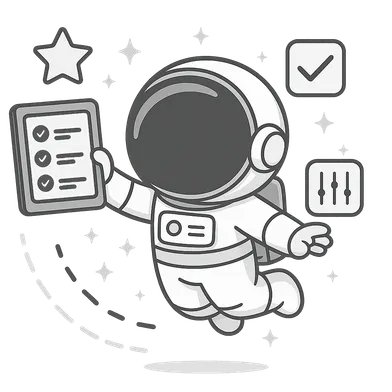
Ready to try MyChoreBoard with your kids?
Install on any phone, tablet or computer. Free with no sign-in hoops.
Get Started Now